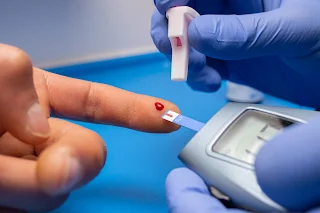Enhances Physical Strength and Flexibility: Regular practice of yoga promotes the development of core strength, flexibility, and balance. By engaging in various poses and asanas, individuals can cultivate a strong and supple body, leading to improved posture, increased muscle tone, and enhanced overall physical performance.
Promotes Stress Reduction and Emotional Well-being: The integration of breathing techniques, meditation, and mindfulness in yoga fosters a deep sense of relaxation and tranquility. Studies have shown that practicing yoga can reduce stress, anxiety, and depression while enhancing emotional well-being and promoting a positive outlook on life.
Boosts Cardiovascular Health: Engaging in dynamic forms of yoga, such as Vinyasa or Power Yoga, elevates heart rate and enhances cardiovascular endurance. Regular practice can help lower blood pressure, improve blood circulation, and reduce the risk of cardiovascular diseases.
Improves Respiratory Function: Yoga incorporates various breathing exercises, known as pranayama, which emphasize conscious control of breath. These techniques enhance lung capacity, improve respiratory efficiency, and aid in managing conditions such as asthma.
Enhances Mental Clarity and Focus: The combination of physical movement, breath control, and mindfulness in yoga cultivates mental clarity, concentration, and focus. This heightened cognitive function can positively impact daily productivity, decision-making abilities, and overall mental performance.
Increases Body Awareness and Mind-Body Connection: Yoga emphasizes the connection between the body, mind, and breath. Regular practice enhances body awareness, allowing individuals to better understand and respond to their physical and emotional needs. This awareness translates into improved self-care and a deeper understanding of one's overall well-being.
Facilitates Better Sleep: Practicing yoga before bedtime can help individuals unwind, relax, and promote a restful night's sleep. The incorporation of gentle stretches and relaxation techniques prepares the body for deep relaxation, leading to improved sleep quality and duration.
Supports Weight Management: Yoga can play a supportive role in weight management efforts. The physical practice of yoga burns calories, tones muscles, and increases metabolism. Additionally, yoga promotes mindful eating habits, self-acceptance, and a positive body image, which can aid in maintaining a healthy weight.
Cultivates Mindfulness and Self-Acceptance: Yoga encourages individuals to cultivate mindfulness, self-compassion, and acceptance of oneself and others. Through the practice of non-judgment and self-awareness, yoga fosters a positive body image, self-confidence, and a greater sense of self-acceptance and gratitude.
The numerous benefits of yoga extend beyond physical fitness, encompassing mental and emotional well-being. Incorporating yoga into one's routine has the potential to enhance strength, flexibility, and cardiovascular health, while reducing stress, improving sleep, and promoting self-awareness and acceptance. By embracing this ancient practice, individuals can embark on a transformative journey toward holistic well-being







